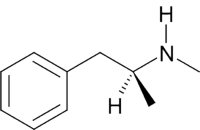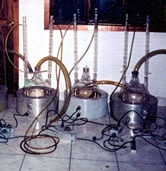Byline: George Kolodner
George Kolodner, a board-certified addiction psychiatrist and medical director of the Kolmac Clinic in Silver Spring, Md., was online Tuesday, Nov. 8, at 4:30 p.m. ET to answer your questions about Crystal Methamphetamine use and the treatment for addiction.
From The Post:
Meth Comes Out of the Closet (Post, Nov. 8)
Kolodner was quoted in today's article:
"George Kolodner, a board-certified addiction psychiatrist and medical director of the Kolmac Clinic in Silver Spring, said his clinic saw an increase in crystal meth users beginning about two years ago, but the trend has not accelerated since then. He said meth users are the most difficult patients to treat because there is no medication to prevent craving or treat the protracted post-use symptoms, such as dysphoria, or depressed mood.
"'With other substances,' said Kolodner, 'we can help people get off and keep off by decreasing their cravings. With meth and cocaine, we don't have that.'"
The Transcript follows.
____________________
Harrisburg, Pa.: What are the differences in how chrystal meth affects the body from cocaine, and, from a medical perspective, is it more damaging than cocaine? I ask because there are discussions on whether there should be legal differences in how courts handle those caught selling and using each, and I wish to understand if there should be a legal difference due to their being a medical difference.
George Kolodner: Meth and cocaine affect the body in very similar ways. in lab studies, people can not usually tell the difference. except that the effect of meth usually lasts longer than does cocaine. Medical effects and legal consequences are very separate issues.
_______________________
Washington, D.C.: I am wondering about how friends of addicts (from before they were addicts, not drug buddies) are supposed to react when for the millionth time the addict says "THIS time the program I'm doing is really helping and I'm doing really well and I'm not going to use anymore." I want to be supportive, but if I only had a nickle... And the truth is that I've resigned myself to going to my friend's funeral in the next three years, because I don't see where else this addiction is gong to go. I guess what I'm asking is if there's any light at the end of the tunnel and how do we know if it's close?
George Kolodner: Support groups such as Naranon and Alanon were established specifically to address the dilemma that friends and family face when people close to them are struggling with addiction. Both have websites and phone numbers and I would recommend that you seek out some meetings near you.
_______________________
Washington, D.C.: The article mentions that crystal meth abuse is well-established in the heartland.
What factors besides sexual orientation, such as harsh religious upbringing or social isolation, might factor into an individual's vulnerability to crystal meth abuse? Does sexual orientation alone cause increased risk?
George Kolodner: Genetics has been documented as a significant factor contributing to vulnerability to alcohol and nicotine dependence. I am not aware of specific studies looking at the genetics of stimulant dependence, but I expect that this is the case and will probably be documented in the future. I do not think that sexual orientation has been documented as a factor contributing to vulnerability.
_______________________
Washington, D.C.: I have been clean for over 4 years now. My question is regarding whether there are any medical tests to determine if any permanent damage (physically that is, mentally I know I'm scarred and I have been dealing with this aspect) has occurred and whether it has healed up, I ask because of a number of articles and studies regarding the long term health effects that has me a little worried about my future health.
George Kolodner: Congratulations on being clean for 4 years! People's bodies are remarkably resilient. If you do not have any residual symptoms by now, I think that you do not need to do anything more than get routine medical monitoring.
_______________________
Washington, D.C.: In your experiences at the clinic, how many meth users do you work with? Do you see this as a growing problem in the area? In the country -- in your opinion? And what happens to meth users physically speaking while they're on the drug? Thank you.
George Kolodner: We have worked with about 40 crystal meth users and our numbers of new patients has not been increasing. I cannot speak for the nation, but these numbers are being well tracked by different organizations. One good source for youth is www.monitoringthefuture.com. The federal agency, NIDA, is also a good source as is the National Clearing House on Alcohol and Drugs. Crystal meth is a stimulant which intensely activates a person's body and mind. Usually this is so intense that it does not help people function. The one exception to this is people with ADD. If used for a prolonged time, it can lead to paranoid symptoms as well as seizures and heart and stroke problems.
_______________________
Minnesota: My sister has become addicted to meth. It's a difficult situation, as she has a schizoaffective disorder as well as substance addiction. There really isn't a lot to do if she doesn't want to be treated; involuntary commitment is merely a very temporary palliative. We've had her parental rights terminated and have tried so hard to get treatment for her.
We live in a small town, and it's so easy to know where she and other addicts are getting their drugs. But local law enforcement is ill-equipped and ill-trained to deal with drug issues -- they're completely overwhelmed and behind the times.
How can people in rural areas advocate for a public-health response to the growth of meth use in our communities? It just seems that each family is on its own.
George Kolodner: Some national organizations exist that may provide some assistance. I would suggest that you contact Partnership for a Drug Free America and Mothers Against Drunk Driving.
_______________________
Arlington, Va.: Do you provide treatment differently for Meth than you would for other drugs? How addictive of a substance is it, and compared with other illegal drugs? How difficult is it for someone to get clean once they're on Meth?
George Kolodner: Like most other programs, we treat all of the drugs similarly. The only difference with meth is that there are currently no medications to assist us, as there are with alcohol, opioids, and nicotine.
Meth is highly "addictive" in that it is very reinforcing -- once someone starts to use it, they tend to keep using it until it is gone, especially because it keeps people awake rather than puts them to sleep. On the other hand, there is no significant physical withdrawal syndrome when one stops so that medical detoxification is not necessary.
Right now, it is one of the most difficult substances from which to get clean. We are all looking for ways to improve our success and hoping for new medications to help us in this pursuit.
_______________________
Anonymous: Is there a particular population of people that is taking Meth more than other populations - are there myths out there about this question?
George Kolodner: The meth problem has been most widespread in Hawaii and the western part of the U.S. and has slowly spread eastward. It has especially been a problem in rural areas. As it has become more popular in cities in the East, it has been especially concentrated in the gay male population
_______________________
George Kolodner: I would be glad to answer any other questions through our website, www.kolmac.com
_______________________
Editor's Note: Washingtonpost.com moderators retain editorial control over Live Online discussions and choose the most relevant questions for guests and hosts; guests and hosts can decline to answer questions.
COPYRIGHT 2005 Washingtonpost Newsweek Interactive
COPYRIGHT 2005 Gale Group



